Address
304 North Cardinal
St. Dorchester Center, MA 02124
Work Hours
Monday to Friday: 7AM - 7PM
Weekend: 10AM - 5PM
Address
304 North Cardinal
St. Dorchester Center, MA 02124
Work Hours
Monday to Friday: 7AM - 7PM
Weekend: 10AM - 5PM
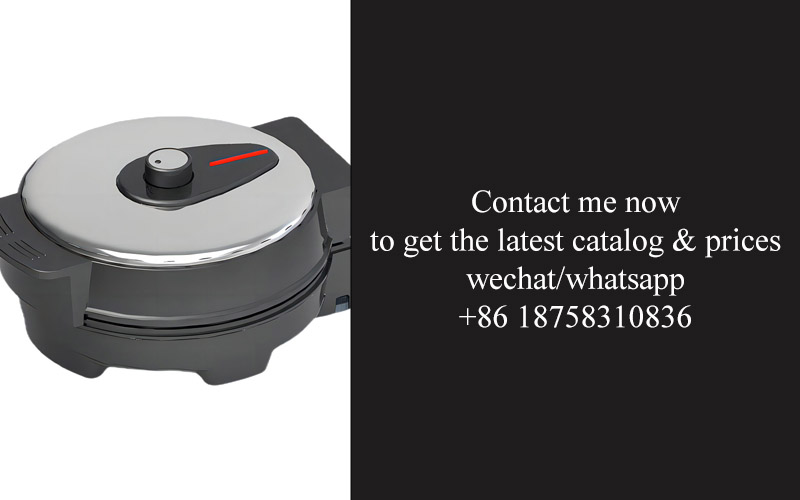
As the world continues to face increasingly unpredictable weather patterns, the need for resilient and adaptable kitchen appliances has become more critical than ever. With extreme climates becoming the norm, the development of -30°C cold resistant models marks a significant leap forward in the appliance industry. These innovations not only promise to enhance the functionality of kitchen appliances but also to redefine consumer expectations and industry standards. The implications of this technological advancement are vast, from the practicality of living in colder regions to the potential for new market opportunities. This article delves into the details of these groundbreaking appliances, exploring their design, performance, and the broader impact they have on both consumers and the industry at large.
In today’s rapidly changing climate, extreme weather conditions are becoming more frequent and intense. From the chill of sub-zero temperatures to the relentless heat of tropical storms, these fluctuations demand a new level of resilience from our everyday products, including kitchen appliances. Embracing the cold is not just a luxury; it’s a necessity. The need for extreme weather appliances has never been more pressing.
The rise in cold-resistant kitchen appliances is not just a trend; it’s a direct response to the harsh realities of living in climates where traditional appliances falter. In regions where winter temperatures plummet below freezing, the reliability of appliances is crucial. Freezers and refrigerators that can maintain optimal temperatures in -30°C conditions are no longer a luxury but a basic requirement for maintaining food safety and preserving the quality of perishable goods.
Imagine a scenario where your refrigerator continues to work flawlessly as the snow piles up outside, ensuring that your family’s food supply remains secure. This is the promise that extreme weather appliances offer. They are designed to withstand not just the cold, but also the associated challenges such as condensation, which can lead to frost buildup and ultimately affect the appliance’s performance.
In regions where the average winter temperature hovers around or below freezing, the demand for cold-resistant appliances is skyrocketing. Homeowners are no longer content with appliances that struggle to keep their contents cool in sub-zero temperatures. They seek solutions that are as durable as they are efficient.
The challenges in developing these appliances are substantial. Materials must be selected not just for their insulation properties but also for their ability to withstand the weight of accumulated snow and ice on external components. Components must be robust enough to prevent breakdowns caused by temperature extremes, while also being energy-efficient to avoid unnecessary utility bills.
One of the key innovations in this field is the use of advanced insulation materials. These materials are engineered to provide superior thermal resistance, keeping the interior of the appliance consistently cool even as the outside temperature drops. Additionally, the sealing mechanisms are designed to be airtight, minimizing any potential for cold air leakage and ensuring that energy is conserved.
Another crucial aspect is the thermal management system within the appliances. These systems are meticulously designed to distribute cold air evenly throughout the appliance, preventing hot and cold spots. This not only improves the overall performance but also extends the life of the contents stored within.
Beyond the technical aspects, there is also the matter of user convenience. In extreme weather conditions, the last thing a homeowner wants is to struggle with a malfunctioning appliance. Therefore, these cold-resistant models are equipped with intuitive controls and displays that remain functional and easy to read in low light or freezing temperatures.
The market for extreme weather appliances is also driven by environmental concerns. With the increasing awareness of climate change, consumers are more conscious of their carbon footprint. Cold-resistant appliances that can maintain their performance in extreme conditions without excessive energy use align with these sustainability goals.
The adoption of cold-resistant kitchen appliances is not limited to homes; it extends to commercial settings as well. Restaurants, hotels, and even outdoor facilities in cold climates rely on these robust appliances to ensure their operations run smoothly. This demand is only expected to grow as more businesses recognize the value of having appliances that can operate reliably in any weather.
In conclusion, the need for extreme weather appliances is a reflection of our changing world. As temperatures continue to fluctuate, the demand for appliances that can withstand the cold will only increase. These appliances are not just a testament to technological advancement; they are a lifeline for those who live in the coldest parts of the world, ensuring that their daily lives remain as comfortable and convenient as possible, regardless of the weather.

Navigating the chilly realm of kitchen appliances, manufacturers are increasingly facing the daunting challenge of creating products that can withstand temperatures plummeting to -30°C. This extreme cold presents a series of technical hurdles that go beyond the typical design considerations.
The first and foremost challenge lies in materials. Traditional metals and plastics used in kitchen appliances simply cannot withstand such low temperatures without losing their structural integrity. Engineers must turn to specialized alloys and plastics that can maintain their form and function in freezing conditions. This often requires a reevaluation of the entire manufacturing process, from raw material sourcing to final assembly.
Another critical issue is insulation. To protect the appliance’s internal components from the frigid exterior, robust insulation is essential. However, traditional insulation materials can become brittle at low temperatures, leading to potential leaks or failures. Innovations in thermal insulation, such as phase change materials (PCMs) or advanced foams, are being explored to provide a reliable barrier against the cold.
The electronic components within kitchen appliances are particularly vulnerable to extreme cold. Batteries, for instance, lose their charge faster in environments, while motors can experience increased friction and wear. Ensuring that these components continue to operate efficiently and safely demands the development of new technologies or adaptations to existing ones. This might involve the use of low-temperature tolerant materials, heat sinks, or even the redesign of the appliance’s power management system.
Water management is also a significant concern. In the cold, water can freeze and expand, potentially causing pipes and tanks to burst. Designers must incorporate anti-freeze mechanisms, such as self-regulating heating elements or anti-freeze fluids, to prevent damage to the appliance’s plumbing systems.
Moreover, the operational reliability of kitchen appliances in extreme cold must be guaranteed. This means not only maintaining the appliance’s functionality but also ensuring that it can be easily used and maintained. User interfaces, such as touchscreens and buttons, must be frost-resistant, and the appliance’s display must be clear and readable even when covered in condensation.
Safety is paramount in the design of cold-resistant kitchen appliances. The risk of electric shocks increases in environments due to the higher electrical resistance of materials. Therefore, engineers must incorporate additional safety features, such as enhanced grounding systems and temperature-sensitive circuit breakers, to prevent accidents.
The energy efficiency of these appliances is also a challenge. Cold-resistant appliances need to consume less power to maintain their functionality, especially considering that the cold can lead to increased energy demands for heating and cooling. This requires the optimization of the appliance’s design to minimize energy loss and maximize energy efficiency.
Lastly, the durability of the appliance is crucial. In regions where -30°C temperatures are common, appliances are subjected to rigorous testing not only in terms of performance but also in terms of longevity. This means that every component, from the hinges to the door seals, must be designed to withstand the stresses of extreme weather conditions.
In conclusion, the development of kitchen appliances that can operate reliably at -30°C is a complex endeavor that pushes the boundaries of material science, electronics, and mechanical engineering. The solutions to these challenges will not only enhance the usability of kitchen appliances in cold climates but also contribute to the broader discussion on sustainability and energy efficiency in the home.

In the realm of kitchen appliances, the introduction of the -30°C cold resistant model marks a monumental shift. This groundbreaking innovation is not just another addition to the market; it’s a revolution that promises to redefine what we expect from our kitchen essentials. Let’s delve into what sets this model apart.
This -30°C cold resistant model is a marvel of modern engineering, designed to thrive in environments where traditional appliances would falter. The core of its innovation lies in its ability to maintain peak performance even in the harshest cold climates. This isn’t just about surviving; it’s about excelling.
The materials used in the construction of this model are a testament to the ingenuity of its creators. High-grade stainless steel and advanced thermoplastic composites are employed to ensure that the appliance remains robust and resilient. These materials not only offer durability but also provide excellent insulation against the extreme cold, preserving the appliance’s integrity over time.
One of the standout features of this model is its innovative heating system. It employs a state-of-the-art heating element that quickly and efficiently raises the internal temperature, ensuring that the appliance operates at optimal levels regardless of the external conditions. This is particularly crucial for maintaining the temperature of food or water, making it ideal for use in chillier regions.
The control panel is another area where the -30°C cold resistant model shines. It boasts a user-friendly interface that is easy to navigate, even when your fingers are numb from the cold. The panel is also equipped with smart sensors that can adjust the settings automatically, ensuring that the appliance is always working at the most efficient and effective level.
Energy efficiency is a cornerstone of this model. Despite its robust construction and advanced heating capabilities, it consumes significantly less power than its predecessors. This is achieved through a combination of energy-saving features, such as automatic shut-off functions and optimized heating cycles. Users can rest assured that they’re not just purchasing an appliance that can withstand the cold; they’re also making a smart and sustainable choice.
Safety is paramount in the design of this -30°C cold resistant model. It comes with multiple fail-safe mechanisms that prevent overheating and potential fire hazards. The appliance is also designed to minimize the risk of frostbite for those using it in extreme cold environments, with features that protect users from direct contact with the heating elements.
The -30°C cold resistant model also offers a level of versatility that is unmatched. It’s not just a kitchen appliance; it’s a multipurpose tool that can be used for a variety of tasks, from cooking to food preservation. Its ability to maintain temperatures in a narrow range makes it perfect for delicate dishes that require precise control over temperature.
In terms of design, the model is sleek and modern, with a clean aesthetic that complements any kitchen decor. The compact size and concealed wiring ensure that it doesn’t dominate the space, allowing it to fit seamlessly into even the smallest kitchens.
The impact of this model on the market is significant. It’s not just about offering a new product; it’s about addressing a real need in the market. As climate change continues to push temperatures lower in certain regions, the demand for such a robust and efficient appliance is only going to grow.
The -30°C cold resistant model is not just a technological achievement; it’s a practical solution for those who live in or visit cold climates. It’s an appliance that can handle the rigors of extreme weather conditions, providing comfort and convenience without compromise. This model is more than just a game-changer; it’s a glimpse into the future of kitchen appliances, where innovation meets necessity.
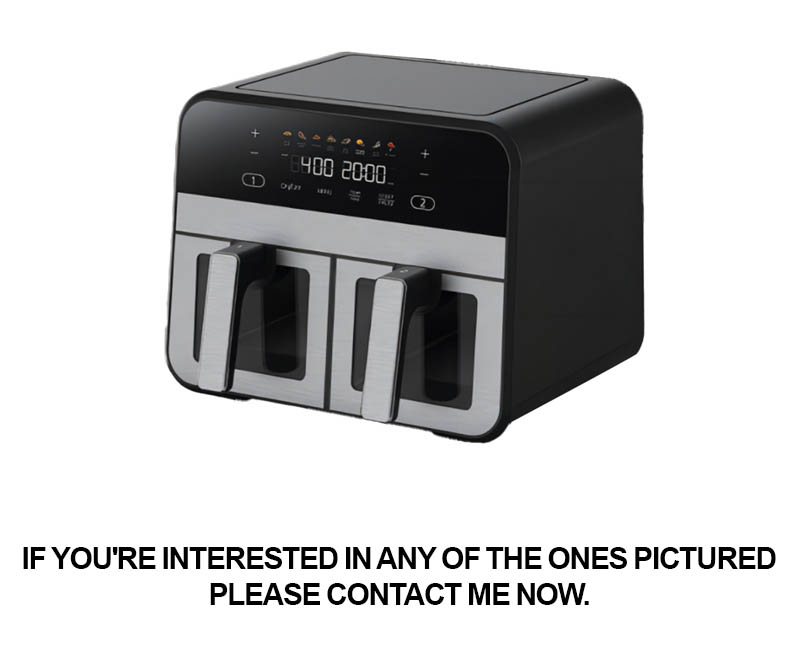
The -30°C Cold Resistant Model: A Game-Changer
In the relentless pursuit of innovation, the introduction of the -30°C cold resistant model in the kitchen appliances sector marks a significant milestone. This groundbreaking model is not just another addition to the market; it’s a leap forward in technology that redefines what’s possible in extreme conditions. Let’s delve into the design innovations that make this model a game-changer.
The outer shell of the -30°C cold resistant model is crafted from a high-grade, ultra-thin stainless steel that not only ensures durability but also maintains its structural integrity at temperatures as low as -30°C. This material choice is a testament to the engineering team’s commitment to creating a product that can withstand the rigors of cold climates without compromising on aesthetics.
Inside, the insulation is a marvel of modern engineering. The model employs a multi-layered, high-performance insulation system that not only keeps the appliance’s internal temperature stable but also prevents frost and ice buildup. This innovative insulation is designed to maintain a thermal barrier, ensuring that the appliance operates efficiently even in sub-zero temperatures.
The refrigeration system is another area where the -30°C model excels. It features a cutting-edge compressor that is specifically designed to handle the extreme cold. This compressor is not only more energy-efficient but also boasts a longer lifespan than traditional compressors, making it a cost-effective solution for consumers in cold regions.
The control panel, a crucial component in any kitchen appliance, has been reimagined for the -30°C model. It’s equipped with a user-friendly interface that allows for precise temperature control and monitoring. The panel is also resistant to frost and moisture, ensuring that it remains functional in the harshest conditions.
One of the standout features of the -30°C model is its adaptive cooling technology. This system can detect changes in the external temperature and adjust the internal cooling cycles accordingly. For example, if the outdoor temperature drops, the appliance will automatically increase its cooling power to maintain the desired internal temperature, thus preventing food spoilage.
The design of the -30°C model doesn’t stop at its mechanical and electronic components. The appliance is also designed with ergonomics in mind. The handles and doors are engineered to be easy to grip and open, even with gloves on, which is a necessity in cold environments. The door seals are also reinforced to prevent any cold air from seeping in, maintaining the appliance’s efficiency.
In terms of energy efficiency, the -30°C model has been optimized to consume less power than its predecessors. This is achieved through the use of advanced insulation and a highly efficient refrigeration system. The model’s energy-saving capabilities are not just environmentally friendly but also translate to significant cost savings for the consumer.
The -30°C model also incorporates smart technology that allows it to be remotely controlled. Users can manage settings, check the appliance’s status, and even receive alerts about maintenance or potential issues through their smartphones or other smart devices. This level of connectivity ensures that the appliance remains a reliable companion, no matter where the user is.
The design of the -30°C model is not just about functionality; it’s also about sustainability. The appliance is designed to be easily recyclable, with components that can be disassembled and repurposed, reducing its environmental impact over its lifetime.
Lastly, the -30°C model’s design includes a robust safety feature that prevents the appliance from operating if the internal temperature drops below a certain threshold. This safeguard ensures that the appliance remains safe to use and protects the contents inside from freezing.
In summary, the design innovations of the -30°C cold resistant model are a testament to the ingenuity of modern engineering. From its durable outer shell to its energy-efficient refrigeration system, every aspect of this model has been meticulously crafted to excel in extreme cold. It’s not just a kitchen appliance; it’s a symbol of the possibilities when technology meets the challenge of cold climates.
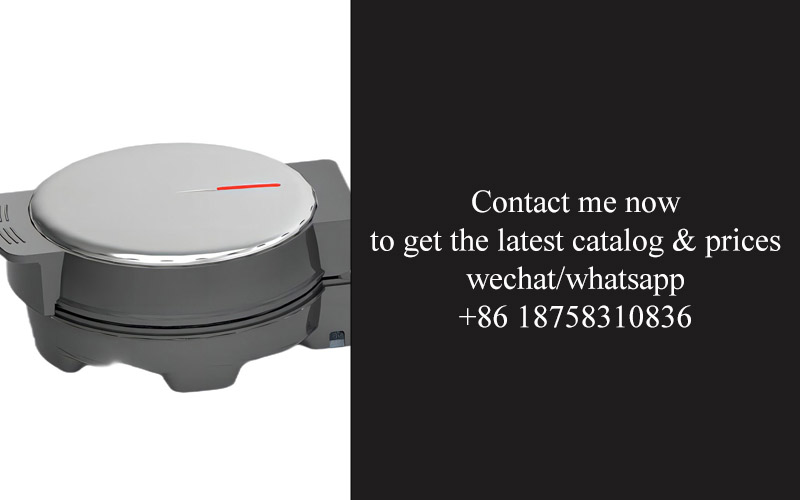
Navigating the frigid extremes, the -30°C cold resistant model doesn’t just survive—it thrives. Its performance is a testament to meticulous engineering, designed to ensure efficiency even in the harshest climates. Here’s how it excels:
The appliance’s core lies in its advanced insulation. Every nook and cranny is sealed with cutting-edge materials that trap heat, preventing any escape. This isn’t just about maintaining temperature; it’s about doing so with minimal energy consumption. The insulation is so effective that it allows the unit to maintain optimal performance without the need for excessive energy input.
In the coldest climates, the issue of condensation can be a nightmare. The -30°C model addresses this with a smart condensation control system. By regulating the internal humidity, the appliance prevents the buildup of frost and water, which could lead to malfunctions. This innovation not only preserves the appliance’s efficiency but also extends its lifespan.
The cold-resistant model is powered by a high-efficiency motor. Engineered to operate at lower temperatures, this motor ensures that the appliance can still deliver peak performance. The design includes a special lubricant that maintains its fluidity in freezing conditions, avoiding the seizing that can occur in conventional motors.
Heat exchange is a critical component of kitchen appliances, and in extreme cold, it becomes even more so. The -30°C model employs an innovative heat exchanger that operates efficiently at low temperatures. It’s crafted from a material that expands at a lower rate than the others, which prevents cracking and maintains the integrity of the system even when the mercury plummets.
Energy efficiency is paramount, and the -30°C model doesn’t skimp on this. It features an intelligent energy management system that adapts to the environmental conditions. By analyzing the external temperature and adjusting its energy usage accordingly, the appliance minimizes energy consumption while maximizing performance.
The controls are another area where the -30°C model shines. The user interface is designed with simplicity and precision in mind. It allows for quick adjustments to settings, ensuring that the appliance operates at the desired temperature with minimal effort. The controls are also freeze-resistant, with a durable outer layer that prevents them from becoming unresponsive in cold conditions.
Safety is a top priority, especially in appliances designed for such extreme conditions. The -30°C model includes multiple safety features, such as overheat protection and automatic shut-off mechanisms. These features prevent any potential damage to the appliance or, more importantly, to the user.
Maintenance is often a concern with appliances designed for harsh environments, but the -30°C model simplifies this process. Regular cleaning is facilitated by a non-stick surface that’s easy to clean and resistant to wear. The appliance also features a self-cleaning mode that reduces the need for manual intervention.
In terms of durability, the -30°C model is built to last. Its components are selected for their resilience, and the construction is reinforced to withstand the rigors of cold temperatures. This not only ensures that the appliance performs well over time but also reduces the likelihood of repairs and replacements.
The -30°C cold resistant model’s performance is a blend of advanced technology and thoughtful design. It manages to maintain efficiency in the coldest climates without compromising on usability or safety. Whether it’s a commercial kitchen in a mountain retreat or a residential kitchen in a subarctic region, this appliance is designed to be a reliable workhorse, delivering consistent performance year-round.
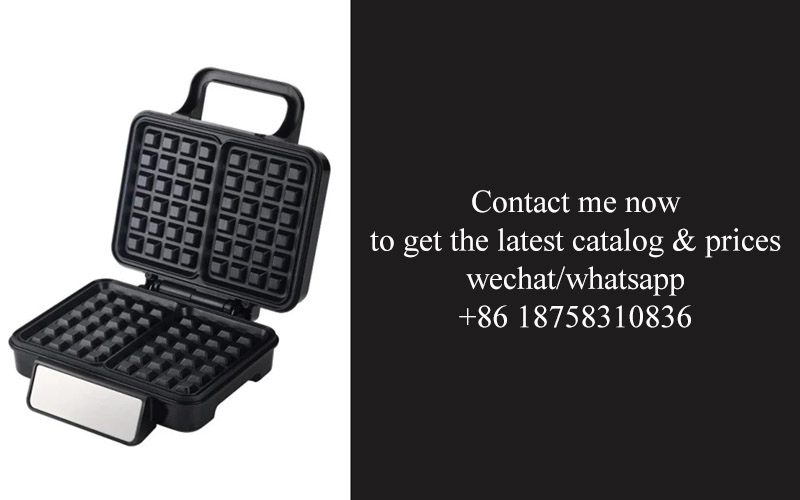
In recent years, the demand for appliances that can withstand extreme weather conditions has surged. This shift is driven by several factors, including climate change, the expansion of cold-weather regions, and the growing need for reliable technology in both residential and commercial settings. Let’s delve into the market trends shaping the demand for extreme weather appliances.
The rise of cold-weather regions is a significant trend influencing the market. With the polar vortex becoming more frequent and intense, cities and towns that were once considered temperate are now experiencing harsh winters. This shift has led to a surge in demand for appliances that can operate efficiently in sub-zero temperatures.
Climate change is another major factor. As global temperatures fluctuate, there’s an increased risk of extreme weather events, such as prolonged cold snaps and heavy snowfalls. This has prompted consumers to seek out appliances that can not only survive but also thrive in these conditions.
The expansion of remote and rural areas is also contributing to the demand for extreme weather appliances. In regions where traditional infrastructure is lacking, reliable appliances are essential for daily living. This includes everything from heating and cooling systems to kitchen and laundry appliances.
Commercial applications are also driving the market. Industries such as agriculture, mining, and construction often operate in extreme weather conditions. They require appliances that can withstand harsh environments, ensuring continuous operations and minimizing downtime.
The demand for energy-efficient appliances is on the rise, particularly in cold climates. Consumers and businesses alike are looking for ways to reduce their carbon footprint and lower energy bills. This has led to the development of appliances that are designed to use less energy while still providing the necessary functionality.
Smart technology is also playing a role in the market. With the ability to monitor and control appliances remotely, consumers can ensure that their devices are operating efficiently even when they’re not at home. This has become especially important in extreme weather conditions, where appliances need to be reliable and responsive.
The market for extreme weather appliances is becoming increasingly segmented. There’s a clear distinction between appliances designed for mild climates and those built for severe conditions. This segmentation is driven by the need for specialized features and materials that can withstand extreme temperatures, humidity, and other environmental factors.
Another trend is the integration of appliances with renewable energy sources. As the cost of solar and wind power continues to decline, there’s a growing interest in appliances that can be powered by these clean energy sources. This is particularly relevant in remote areas where grid connectivity is limited.
The demand for appliances that can handle extreme weather conditions is also being driven by the aging infrastructure in many parts of the world. As older appliances fail and need to be replaced, consumers and businesses are seeking out newer, more resilient models.
Safety is another critical factor in the market. Appliances that can operate safely in extreme conditions are not only more reliable but also provide peace of mind to users. This is especially important in areas prone to power outages and other emergencies.
Lastly, the market for extreme weather appliances is being influenced by regulatory changes. Governments around the world are implementing stricter energy efficiency and safety standards, which are pushing manufacturers to develop new technologies and products.
In conclusion, the demand for extreme weather appliances is being driven by a combination of environmental changes, technological advancements, and regulatory requirements. As the market continues to evolve, we can expect to see even more innovative solutions that will help us navigate the challenges posed by extreme weather conditions.
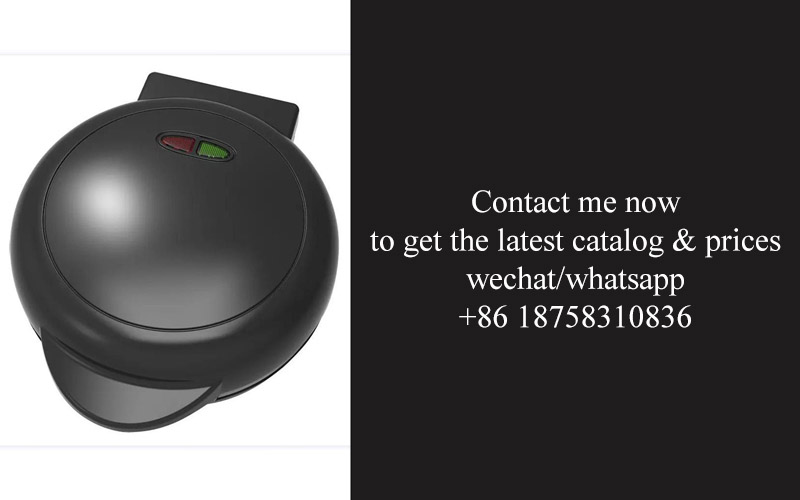
In the relentless pursuit of convenience and comfort, the kitchen has evolved beyond mere culinary hubs to become a space where technology and style coexist. The advent of the -30°C cold resistant model has ushered in a new era, offering consumers unparalleled benefits that extend far beyond the confines of the kitchen. Here’s why this model matters:
Enduring Quality in Harsh Conditions: The -30°C cold resistant model is not just another appliance; it’s a testament to enduring quality in environments that can be harsh. Its ability to function seamlessly in extreme cold reflects a commitment to durability that resonates with consumers who demand reliability from their home essentials.
Extended Lifespan: One of the most significant benefits of the -30°C model is its extended lifespan. Traditional appliances often succumb to the rigors of cold temperatures, leading to frequent repairs and replacements. This new model is engineered to withstand extreme conditions, significantly reducing the need for costly repairs and ensuring a longer-lasting investment.
Consistency in Performance: No matter how low the temperature plummets, the -30°C model maintains consistent performance. This means your fridge, freezer, or oven will continue to operate as intended, providing the same level of efficiency and convenience year-round, even during the coldest winters.
Enhanced Safety Features: Cold-resistant appliances often come with enhanced safety features designed to prevent accidents that could occur in freezing conditions. For instance, they might include automatic defrosting systems, temperature controls that prevent the appliance from overheating, and durable materials that reduce the risk of breakage.
Energy Efficiency: Despite the added challenge of operating in sub-zero temperatures, the -30°C model is designed with energy efficiency in mind. Advanced insulation and efficient heating elements ensure that the appliance consumes less energy, leading to lower utility bills and a smaller carbon footprint.
Versatility Across Geographical Areas: The demand for extreme weather appliances is on the rise, particularly in regions where the climate is characterized by severe cold. The -30°C model caters to this demand, offering a versatile solution for homes across the globe, from the icy landscapes of Canada to the mountainous regions of Europe.
Aesthetic Appeal: Beyond functionality, the design of the -30°C model is also a point of pride. Modern aesthetics and innovative materials ensure that the appliance blends seamlessly into any kitchen décor, maintaining a sophisticated look that complements the home’s style.
Health and Wellness: In the kitchen, maintaining food safety is paramount. The -30°C model provides the necessary cold storage to keep perishable items safe from spoilage, reducing the risk of foodborne illnesses. This aspect is particularly important for those who prefer home-prepared meals, ensuring they can enjoy healthy food even during the depths of winter.
Economic Considerations: For consumers, the initial cost of a high-quality, cold-resistant appliance may seem steep. However, when considering the long-term savings on repairs, energy bills, and the extended lifespan, the investment becomes more attractive. It’s a cost-effective choice that pays off over time.
Support for Modern Lifestyles: As people’s lives become more fast-paced, the convenience of appliances that can handle extreme conditions is invaluable. The -30°C model supports busy lifestyles by ensuring that kitchen tasks can be completed efficiently, no matter the season or climate.
In a world where the weather is increasingly unpredictable, the -30°C cold resistant model is a beacon of innovation that addresses the needs of consumers who demand more from their kitchen appliances. It’s not just an appliance; it’s a symbol of adaptability, quality, and the relentless pursuit of a comfortable, efficient home life.
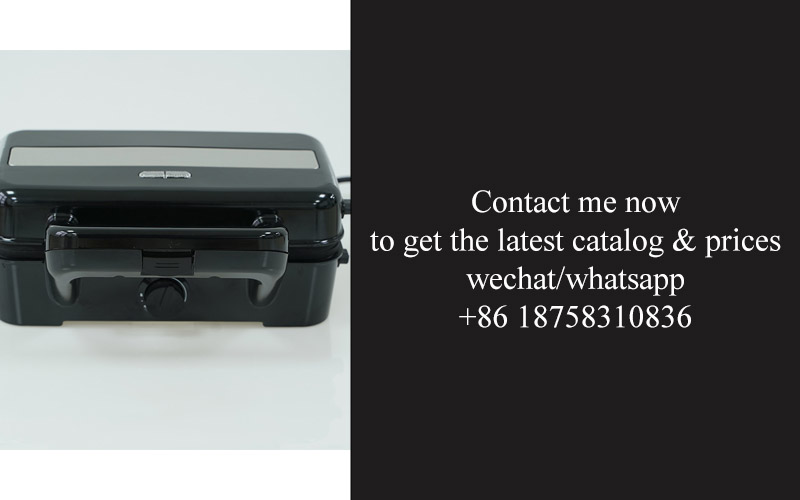
In the face of increasingly unpredictable weather patterns, the kitchen appliance industry is witnessing a shift in consumer demands. The rise of extreme weather appliances, such as those designed to function in -30°C temperatures, is not just a trend—it’s a testament to the evolving expectations of homeowners. Let’s delve into the implications of this shift.
The demand for appliances that can withstand harsh climates has been growing, and it’s not just limited to regions with extreme winters. Coastal areas, mountainous terrain, and even some urban settings are experiencing more severe weather events. This shift has led manufacturers to rethink their designs, focusing on durability, energy efficiency, and adaptability.
One of the key aspects of these new appliances is their ability to maintain consistent performance in frigid conditions. This means not just survival, but also optimal functionality, which is where the -30°C model shines. The model’s design incorporates several innovative features that address the unique challenges posed by extreme cold.
For starters, the insulation is top-notch. It’s not just about keeping the appliance warm; it’s about preventing the cold from seeping in and affecting the appliance’s operation. Advanced insulation materials and techniques ensure that the appliance remains stable in temperatures well below freezing.
Then there’s the issue of condensation. In cold environments, moisture can become a significant problem, leading to corrosion and reduced lifespan. The -30°C model employs a special venting system that minimizes condensation, thus preserving the integrity of the appliance over time.
Energy efficiency is another critical factor. In regions where power outages are common during extreme weather, appliances that consume less energy can be a lifesaver. The -30°C model is designed with energy-saving features that not only reduce utility bills but also ensure that the appliance operates reliably during power disruptions.
The rise of extreme weather appliances also reflects a broader trend towards sustainability. Consumers are becoming more environmentally conscious, and they’re looking for products that not only perform well but also do so with a minimal environmental footprint. The -30°C model is crafted with eco-friendly materials and is designed to be long-lasting, reducing the need for frequent replacements.
From an industry perspective, the demand for these appliances is reshaping the landscape. Manufacturers are investing in research and development to create more innovative solutions. This includes exploring new materials, such as advanced metals and plastics that can withstand extreme temperatures, and developing smart features that can optimize performance and energy use.
The impact of this shift is also felt in supply chains. Components for these appliances must be sourced from suppliers who can guarantee their reliability in cold conditions. This often means working with manufacturers in regions that already deal with severe winters, fostering collaboration and knowledge exchange.
For consumers, the benefits are clear. In addition to the practical advantages of appliances that can handle extreme weather, there’s also the peace of mind that comes with knowing your kitchen essentials will work when you need them most. This is particularly important for those living in remote areas or in homes that are not connected to centralized heating systems.
Moreover, the -30°C model offers a level of versatility that is unmatched by traditional appliances. Whether you’re a hunter in the woods, a fisherman on the lake, or a homeowner in a cold climate, this appliance can be a reliable companion. It’s not just about cooking; it’s about being prepared for whatever the elements may throw at you.
In the future, we can expect to see even more sophisticated designs and features emerging from the kitchen appliance industry. The -30°C model is just the beginning. As technology advances and consumer needs evolve, appliances will continue to adapt, offering solutions that are not just functional but also resilient and sustainable.
Ultimately, the rise of extreme weather appliances like the -30°C model is a sign of the times. It’s a recognition that the world is changing, and our homes and the gadgets within them need to change with it. By focusing on innovation and consumer needs, the kitchen appliance industry is poised to lead the way in creating products that are truly future-proof.

In the harsh realities of extreme climates, the -30°C cold resistant model has emerged as a beacon of innovation. Let’s delve into some real-world applications where this remarkable appliance has proven its worth.
The Alaskan Kitchen: A Culinary Haven in Chilly ConditionsIn Alaska, where the winter chill can dip below -30°C, the -30°C cold resistant model has become a staple in many homes. Local chefs and homeowners alike appreciate its ability to maintain consistent temperatures, ensuring that food preservation and preparation are not hindered by the extreme cold.
The Arctic Research Station: A Hub of Scientific ExplorationArctic research stations operate in some of the most unforgiving environments on Earth. The -30°C cold resistant model has been integrated into these facilities, providing researchers with reliable appliances that can withstand the relentless cold. This allows for continuous experiments and data collection, even when the temperatures plummet.
Mountain Cabin Retreats: Comfort in the Snow-Capped PeaksMountain cabin enthusiasts often seek refuge in snow-covered retreats, where the cold is a constant companion. The -30°C model has found its way into these cozy sanctuaries, offering a touch of modern convenience that doesn’t compromise on durability. Cabin owners can now enjoy a warm cup of coffee or a hearty meal, regardless of the external temperature.
Remote Villages in Siberia: A Lifeline in Challenging TerrainIn remote Siberian villages, access to basic amenities can be scarce. The -30°C cold resistant model has become a lifeline for these communities, providing them with appliances that can operate in the extreme cold. This not only improves the quality of life but also ensures that essential tasks such as cooking and heating can be carried out safely and efficiently.
Camping and Outdoor Adventures: A Companion for the WildFor outdoor enthusiasts and campers, the -30°C cold resistant model is a game-changer. Whether it’s a weekend getaway or an extended wilderness trek, this appliance ensures that food can be prepared and stored without the fear of malfunctioning in sub-zero temperatures. It’s a reliable companion for those who love the great outdoors.
Extreme Weather Preparedness: A Must-Have for Emergency SheltersIn the event of extreme weather emergencies, such as blizzards or power outages, the -30°C cold resistant model serves as a crucial tool for emergency shelters. It provides a source of warmth and sustenance, even when traditional power sources are unavailable. This has been invaluable in maintaining the health and well-being of those affected by such disasters.
Agricultural Applications: Preserving Crops in Chilly ClimatesFor farmers in regions with short growing seasons and cold winters, the -30°C cold resistant model offers a solution to preserving crops. By using this appliance, they can extend the storage life of their produce, ensuring that there is a steady supply even when the weather is at its worst.
Innovative Solutions for Off-Grid Living: Self-Sufficiency in the ColdOff-grid living is becoming increasingly popular, and the -30°C cold resistant model is perfectly suited for such lifestyles. It allows individuals and families to live independently in remote locations, providing them with the necessary appliances to maintain a comfortable and functional home, regardless of the climate.
The -30°C cold resistant model has found its way into various real-world applications, showcasing its versatility and reliability in some of the harshest conditions on Earth. Its presence in these diverse scenarios highlights the importance of innovation in creating appliances that can withstand extreme weather, ultimately improving the quality of life for those who call these challenging environments home.
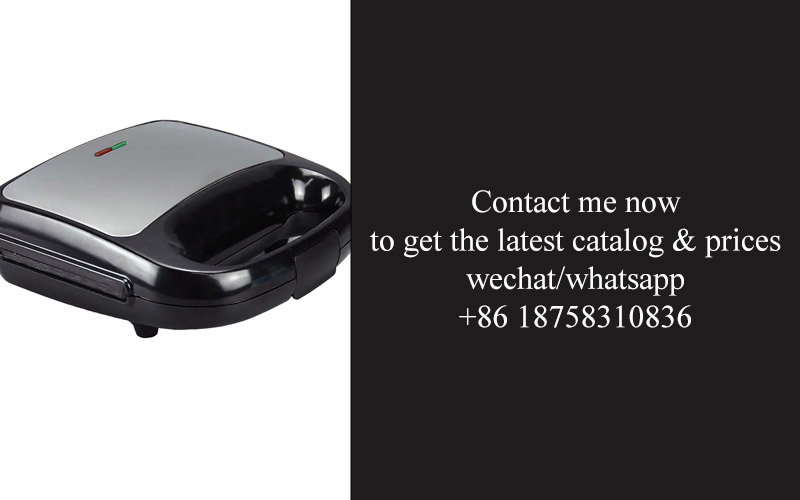
In a world where climate extremes are becoming more prevalent, the development of kitchen appliances that can withstand frigid temperatures is not just a novelty; it’s a necessity. The introduction of the -30°C cold resistant model marks a significant shift in how we perceive and utilize kitchen technology. Here’s a look at the implications and applications of this groundbreaking innovation.
The -30°C cold resistant model is designed to thrive in environments that are typically inhospitable to standard appliances. Its robust construction and cutting-edge technology make it an indispensable tool for homeowners in cold climates, offering a level of reliability and performance that was once unimaginable.
Imagine a kitchen in a remote Alaskan lodge, where the outside temperature can plummet to -30°C. Here, the -30°C cold resistant refrigerator stands as a silent guardian, ensuring that perishable goods remain frozen, and the kitchen remains a sanctuary of convenience. The model’s ability to maintain optimal temperatures in such extreme conditions is a testament to its engineering prowess.
But the impact of this model extends far beyond the frigid north. In Europe, where the winter months can bring temperatures that dip well below freezing, the -30°C cold resistant model is a game-changer for homeowners and businesses alike. It means no more worrying about your fridge freezing solid, or your freezer losing its contents due to power outages during harsh winters.
The design of the -30°C cold resistant model is a marvel of modern engineering. It incorporates several key innovations that set it apart from traditional appliances:
But it’s not just about the materials and construction; the -30°C cold resistant model also incorporates smart technology that enhances its performance in the coldest climates:
The performance of the -30°C cold resistant model is nothing short of remarkable. It operates flawlessly in temperatures that would typically cripple standard appliances. This means that families and businesses can rely on it for consistent performance, regardless of the weather outside.
In the retail sector, for instance, the -30°C cold resistant refrigerator is a game-changer for supermarkets and convenience stores in cold regions. It allows for uninterrupted service, ensuring that customers can always find their favorite frozen goods, from ice cream to meats, available year-round.
The demand for extreme weather appliances is on the rise, and it’s easy to see why. As climate change continues to push the boundaries of what we consider “normal” weather patterns, the need for appliances that can withstand extreme conditions becomes increasingly apparent.
The introduction of the -30°C cold resistant model has already sparked a wave of innovation in the kitchen appliance industry. Manufacturers are now exploring new materials and technologies that could potentially lead to even more resilient and efficient appliances. This shift is not just about meeting the demands of a changing climate; it’s about creating a future where kitchen appliances are as reliable and adaptable as the people who use them.
In practical terms, the real-world applications of the -30°C cold resistant model are already making a tangible difference. From mountain retreats to polar research stations, these appliances are becoming an essential part of daily life. They’re not just tools; they’re enablers, providing comfort and convenience in some of the harshest environments on Earth.
As we look to the future, it’s clear that the -30°C cold resistant model is more than just a product; it’s a harbinger of things to come. It’s a reminder that innovation can overcome adversity, and that when it comes to kitchen appliances, the future is indeed cold-proof.